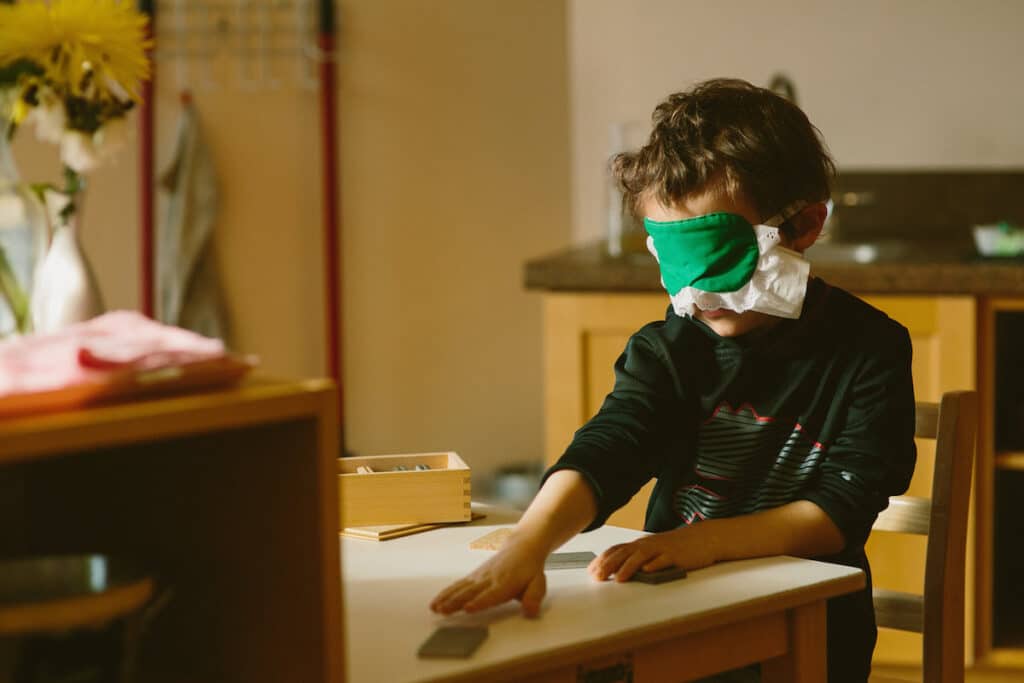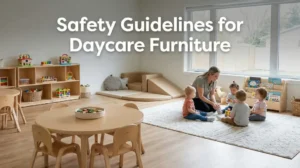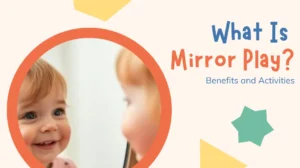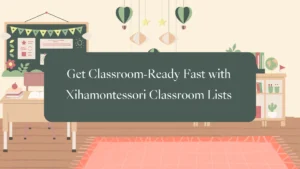In a Montessori classroom, young children are presented with different activities and opportunities to refine their senses. The Montessori directress encourages the children to perceive through their senses such as olfactory, visual, gustatory, and tactile senses. There is another sense that is present in almost all children and if it is harnessed, can enable the child to visualize and develop real-life problem-solving skills. This sense is known as the Stereognostic sense.
The Stereognostic sense, also known as tactile gnosis, is defined as the ability of humans to determine an object without tasting it, smelling it, looking at it, or even hearing it. When you are able to locate the keys in your bag without looking at them, that is your Stereognostic sense in action.
If you are left wondering about what is a Stereognostic sense in Montessori, this article will give you an insight into how you can develop a Stereognostic sense and implement it in a Montessori classroom.
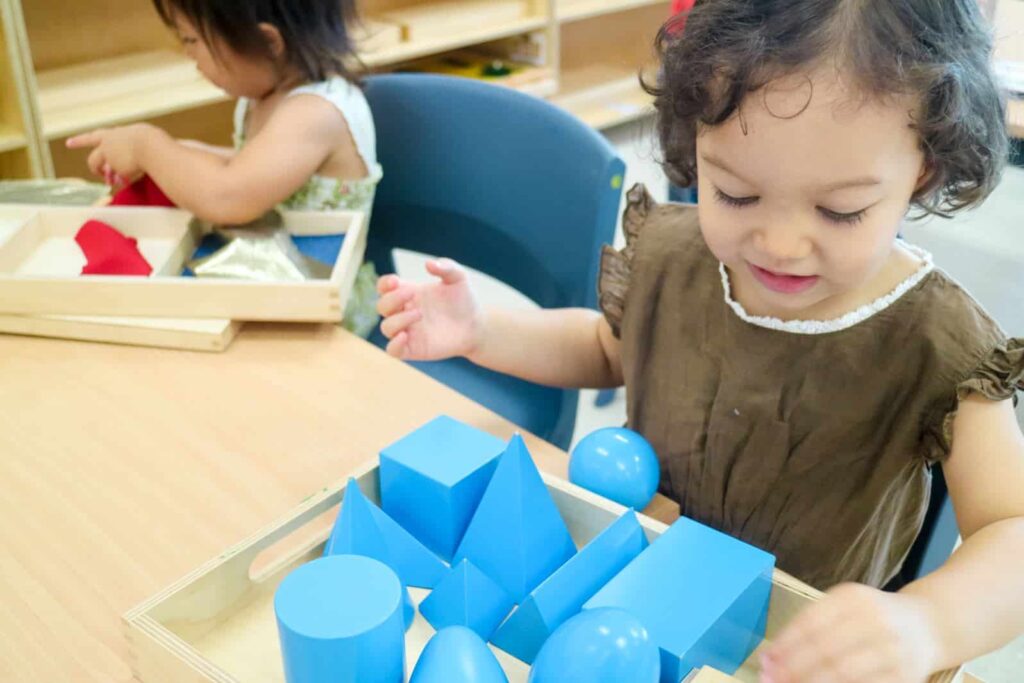
How do you develop Stereognostic sense?
Stereognostic sense is crucial to a child’s development when the teacher is working on refining the child’s sensorial area. It allows the child to recognize an object by just feeling it through the touch of his/her hands. The child is first introduced to different objects. He/she then feels the object in their hands and notes down mentally what they are feeling. Then, without looking at the object, the child is then again presented with several objects. Then, he/she can paint a mental picture of the object that they are feeling by considering the weight, texture, and size of the object.
There are many such activities that the Montessori directress performs in front of the children to first get them accustomed to the activity and then later ask them to join in.
What is a Stereognostic Sense Exercise?
A Stereognostic sense exercise is one in which the directress motivates the students to find a certain 3-d shape, while blindfolded, from a bag. In this exercise, both the directress and the children have a small bag in front of them. The directress first places her hand inside the bag and lifts a shape. The child then has to do the same thing and retrieve the same geometrical shape from the bag by feeling all the shapes inside the bag. This exercise continues as long as all the solid shapes get paired.
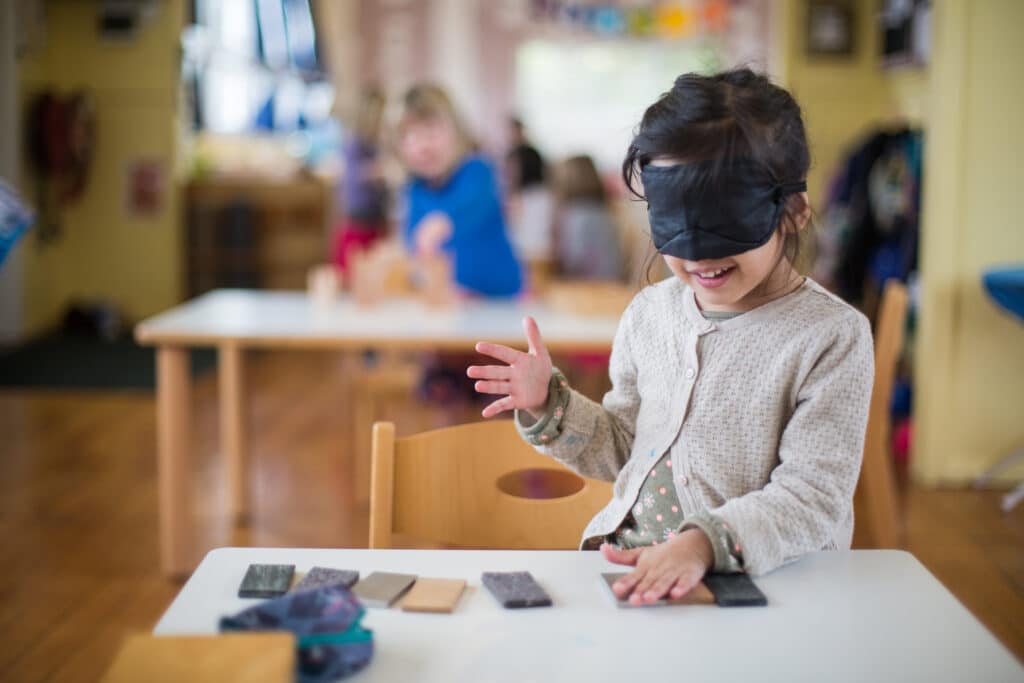
What are Different Stereognostic Sense Exercises?
The Montessori directress makes use of different materials and objects to carry out activities that enhance the Stereognostic sense in children. These exercises encourage the child to explore the objects by just feeling them. Here are some exercises and activities that help develop Stereognostic sense in children:
Mystery Bag
A mystery bag is the most commonly carried out activity by Montessori directresses all over the world. In this activity, the directress fills a cloth bag with various objects of different materials such as a cotton ball, keys, a small basket, small rocks, feathers, marbles, ribbons, or anything that she finds interesting and is easily available. She then introduces these items to the children and asks them to feel them and name each item. After this, she blindfolds the children one by one and asks them to feel the objects in the mystery bag and name one object that they like, and pick it out from the bag. The teacher then removes the blindfold and the child can see if they named the right object.
Sandpaper Globe
A Sandpaper Globe is another activity that helps children relate to the material by the feel of touch. In this activity, the Montessori directress provides the students with a globe and tells them what it is. Then, she asks the children to touch and feel the globe with both hands around the globe. As the child is feeling the globe, the directress points to the rough sandpaper area and tells them that this is the land. Then, she points to the smooth blue-painted area and lets the students know that this is the ocean. She repeats the process by pointing to other areas that are land and water. After this, the directress asks the students to identify land and water by pointing to areas around the globe.
Sorting trays
Montessori directresses perform ‘sorting trays’ activity with the kids to improve their Stereognostic sense. For this activity, they arrange three or more bowls on a tray. All these bowls have different-sized objects such as buttons, marbles, or rocks; one type in each bowl. There is also an empty dish in the middle of the tray. The directress first performs the activity herself by feeling the largest item in the bowl with her eyes open and then repeats it with her eyes closed. She then asks the children to do the same with their eyes closed, and place the object in the empty dish after naming the object.
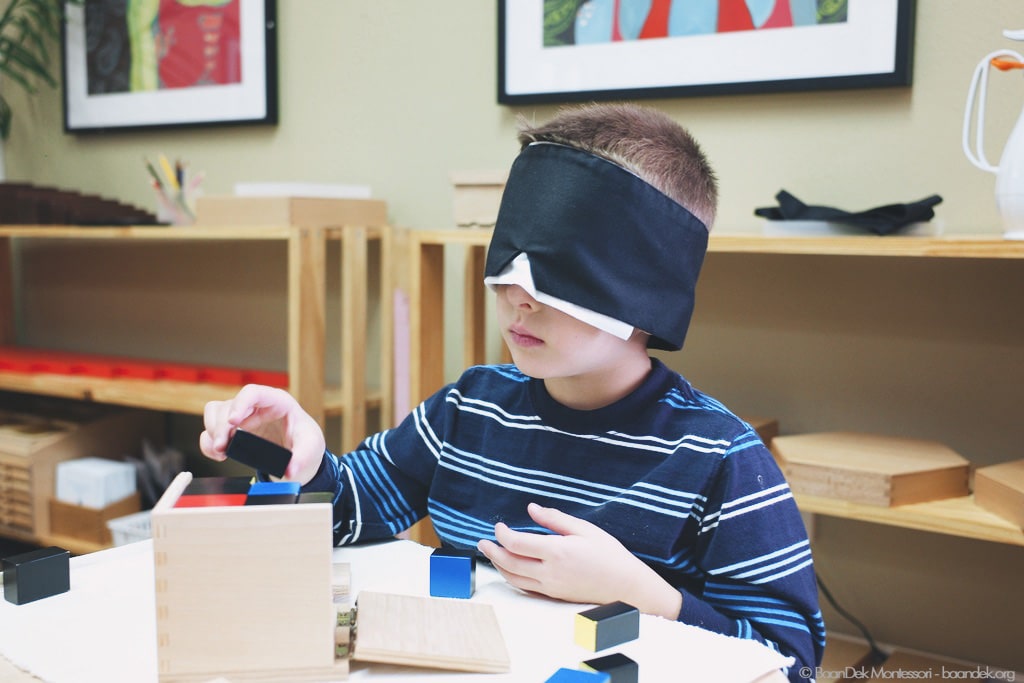
What is the difference between tactile and Stereognostic sense?
Tactile sense refers to the sense of touch. The Stereognostic sense can often time be confused with the tactile sense. However, the Stereognostic sense requires the person to touch and feel the objects without making use of sight, sound, and smell.
Can you improve the Stereognostic sense of your child at home?
If you want to develop Stereognostic sense in your child within the comfort of your home, then you can do so quite easily. You can perform the mystery bag activity with your child by placing random objects of different sizes in a cloth bag or even a pillowcase. Then, ask your child to recognize the objects by placing their hand inside the bag or pillowcase. This will be a fun activity for your child and a great bonding experience for you both!
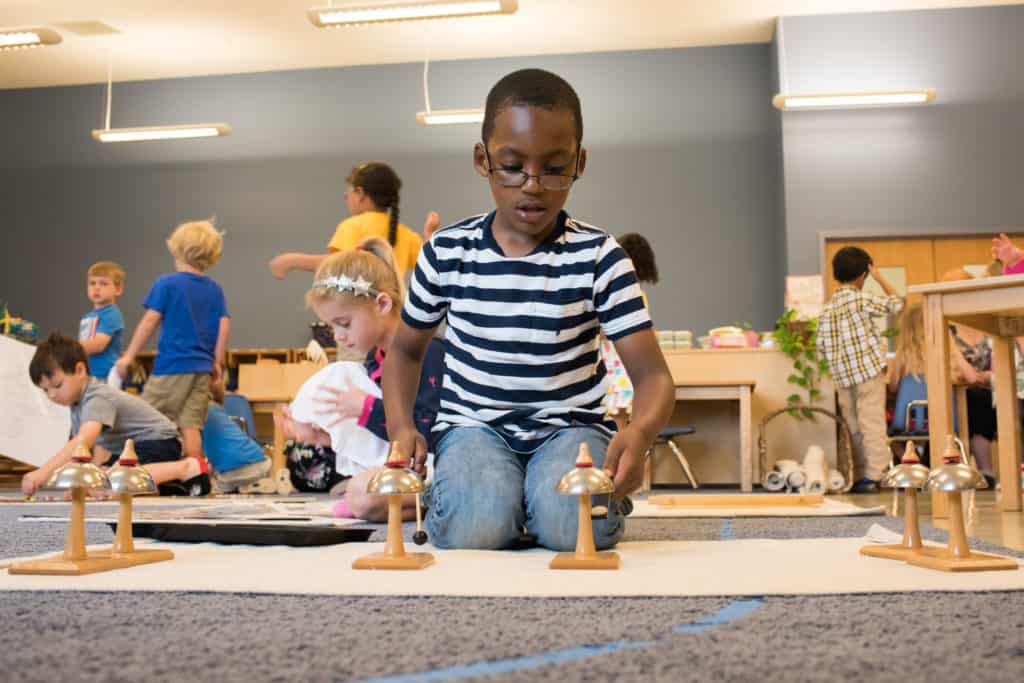
In a Montessori classroom, the Stereognostic sense is among the many senses that are utilized to engage the kids and make them retain what they have learned. By eliminating the option of sight, smell, and sound from the children, their sense of touch becomes heightened. This, in turn, improves their Stereognostic sense.

